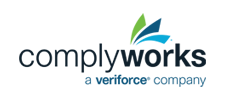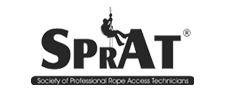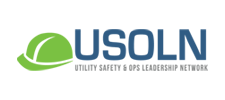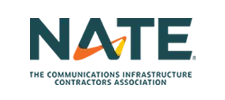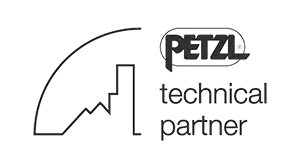4 Key Pillars of Successful Safety Leadership

Organizations must prioritize safety and care for their employees to stand out as leaders in today's competitive business landscape. Successful safety leadership goes beyond regulatory requirements, making a big difference in creating a culture where safety is valued throughout the organization.
A successful safety program involves Leadership Commitment, Employee Engagement, Continuous Improvement, Hazard Identification and Risk Assessment. Incorporating these four pillars into a comprehensive safety program will create an ongoing cycle of improvement.
Safety Leadership Commitment
Creating a culture of workplace safety starts with strong leadership. Managers and supervisors set expectations, provide resources, and hold everyone accountable for safety performance. Employees are more likely to follow safety practices and procedures when guided by leaders who set the tone through words and actions.
Leaders must encourage open communication and provide channels for employees to voice their safety concerns or suggestions. By listening to employees and incorporating their feedback, leaders can create a culture of trust and inclusiveness where employees feel empowered to take part. Recognizing and rewarding safe behaviors and promptly addressing safety issues are also part of effective safety leadership. When leaders prioritize safety as a core value, it inspires employees to do the same.
Investing in comprehensive and ongoing safety training for employees at all levels is also crucial. Employees should be educated about the hazards associated with their tasks and trained to mitigate those hazards effectively. Regular safety communications, such as toolbox talks or safety reminders, can reinforce the importance of safety, ensuring that employees remain informed and aware of potential risks.
By fostering a culture of safety and health from the top down, organizations can create an environment where employees are motivated to prioritize safety in everything they do. When safety is ingrained in every aspect of the organization, it sets the foundation for excellence in safety performance and establishes the organization as a leader in safety within the industry. So let's prioritize safety, lead by example, encourage employee engagement, and continuously improve our safety practices to create a safer and healthier workplace for everyone.
Employee Engagement
Another crucial aspect of successful safety leadership is employee engagement. Organizations should empower their employees to take part in the safety process by providing opportunities for them to give feedback and suggestions, report safety concerns, and contribute to safety committees and training programs. When employees feel engaged in safety initiatives, they are more likely to take ownership of and take responsibility for their safety and the safety of their colleagues.
Empowering employees to take part in the safety process is essential. When employees feel engaged in initiatives, they take ownership and responsibility for their safety and that of their colleagues. Continuous Improvement is a mindset that encourages organizations to assess their safety performance regularly, identify areas for improvement, and take practical measures to prevent incidents.
Engaged employees take ownership of their safety and the safety of their colleagues. Organizations should create a culture that encourages employees to contribute in safety initiatives, providing opportunities for them to contribute their knowledge and perspectives. Engagement can include involving employees in safety committees, conducting safety training and drills, and seeking feedback on safety policies.
Empowering employees to be safety advocates involves recognizing and rewarding safe behaviors. Positive reinforcement, such as praise or incentives, can motivate employees to continue practicing safe behaviors and encourage others to follow suit. In addition, organizations should establish channels for employees to report safety concerns or incidents without fear of retaliation, creating an environment where employees feel comfortable speaking up about potential hazards or incidents. Employee engagement in safety fosters a sense of ownership and responsibility, creating a culture where safety is ingrained in daily work practices.
To further promote employee engagement in safety, organizations should provide opportunities for employees to contribute their ideas and suggestions for improving safety processes and procedures. Employees are often on the front lines of operations and may have valuable insights into potential hazards and practical solutions. Encouraging open communication and actively seeking employee input not only empowers employees but also enhances the overall effectiveness of the safety program.
Embracing continuous improvement
Regularly reviewing and updating safety practices and procedures, and using data and metrics to measure safety performance, helps ensure effectiveness and identify trends or patterns that may need further attention. Hazard identification and risk assessment are crucial in proactively managing potential hazards in the workplace. This involves thoroughly assessing the workplace, evaluating risks, and implementing effective controls. Hazard identification and risk assessment should be an ongoing process, regularly reviewed and updated as your workplace changes or new hazards are introduced.
Continuous Improvement is a mindset organizations should integrate into every safety program. Organizations should regularly assess their safety performance, identify areas for improvement, and take proactive measures to prevent incidents. This involves regularly reviewing and updating safety practices and procedures to ensure their effectiveness and using data and metrics to measure safety performance and identify trends or patterns that may need further attention.
Continuous Improvement is a mindset that organizations should embrace a philosophy of continuous improvement to enhance their safety performance consistently. This involves an ongoing process of regularly assessing safety performance, identifying areas for improvement, and taking preemptive measures to avoid incidents. Organizations need to collect and analyze safety data, such as incident reports and audits, to identify trends or patterns requiring attention and action.
Based on the analysis of program data, organizations should implement corrective and preventive actions to address identified issues and prevent a recurrence. Root cause analysis can be performed to understand the underlying causes of incidents and to implement effective controls to eliminate or reduce risks. Regular safety inspections and audits can also identify potential hazards and help organizations take positive measures to mitigate them, ensuring that potential risks are identified and addressed in a timely manner.
It is essential to review and update safety practices regularly to align with changing industry standards, technological advancements, and lessons learned from incidents. This may involve updating safety training materials, revising standard operating procedures, or incorporating industry best practices. Organizations should also conduct periodic reviews of safety policies, procedures, and protocols to ensure their effectiveness and relevance.
Continuous Improvement in safety performance requires an active approach that involves regular monitoring, analysis, and action to enhance safety practices and prevent incidents. Organizations should foster a culture of continuous improvement, encouraging employees at all levels to participate in identifying areas for improvement and implementing changes to enhance safety performance. This can include promoting open communication, providing channels for employees to share their insights and suggestions, and recognizing and rewarding contributions to safety improvement efforts.
By embracing a mindset of continuous improvement and taking measures to assess and enhance safety performance, organizations can create a safer work environment for their employees and prevent incidents. Regular analysis of safety data, implementation of corrective and preventive actions, periodic reviews of safety policies and procedures, and fostering a continuous improvement culture are critical elements of an effective safety program that helps organizations consistently enhance their safety practices and prevent incidents.
Hazard identification and risk assessment
Organizations should have robust mechanisms for proactively identifying hazards associated with their operations, tasks, or work environments. This involves conducting comprehensive hazard assessments that thoroughly evaluate the workplace and identify potential sources of harm. Various methods can be used, such as job hazard analysis, safety observations, or reporting mechanisms that involve employees in the hazard identification process.
Job Hazard Analysis (JHA)
JHA is a systematic approach that involves breaking down tasks into individual steps and identifying potential hazards associated with each step. This allows organizations to understand the sequence of tasks and identify hazards that may arise at different stages. Safety observations or reporting mechanisms encourage employees to report hazards they observe during their work activities actively. This can be done through safety checklists, safety observation cards, or digital reporting tools that enable employees to report hazards in real-time.
Proactive Risk Assessment
Once hazards are identified, organizations should conduct thorough risk assessments to evaluate the severity and likelihood of potential incidents. Risk assessment involves determining the consequences of incidents, the likelihood of their occurrence, and the ability to detect and mitigate them. This information helps organizations prioritize hazards based on their level of risk and allocate resources effectively for mitigation efforts.
Risk assessments can be conducted through various methods, such as qualitative or quantitative assessments, depending on the hazards and the operations. Qualitative assessments involve using subjective judgment to evaluate the severity, likelihood, and detectability of hazards, while quantitative assessments include using data and metrics to quantify risks based on probability, severity, and exposure. Both methods provide valuable insights that organizations can use to prioritize hazards and develop controls.
Implementing Controls
Based on hazard identification and risk assessment results, organizations should implement controls to mitigate the identified hazards. Categorized into three main types: engineering controls, administrative controls, and employee empowerment.
- Engineering Controls involve physical changes to the workplace or equipment to eliminate or reduce the hazard. Examples include installing safety guards, implementing ventilation systems, or using safety equipment such as fall protection devices.
- Administrative Controls involve changes to policies, procedures, or work practices to minimize the risk of incidents. This can include implementing safety policies, establishing standard operating procedures, providing clear work instructions, and conducting safety training programs.
- Employee Empowerment is another important aspect of controls, as it involves empowering employees to take ownership of safety and fostering a sense of responsibility and accountability. This can be achieved by involving employees in safety committees, conducting tailored safety training and drills, and actively soliciting their feedback on safety policies and procedures.
Why Successful Safety Leadership Matters
Incorporating the four pillars of successful safety leadership into a comprehensive program creates a holistic approach to workplace safety. It establishes a culture embraced by employees at all levels of the organization, from top leadership to front-line workers. Prioritizing safety protects employees from harm, reduces incidents and accidents, and promotes excellence in safety performance. Organizations that prioritize safety are leaders in their industry, which can enhance their reputation and competitiveness. Ultimately, a safer and healthier workplace benefits everyone.
Reinforce your safety program with an experienced and trusted partner. Our team of safety experts is equipped to handle all aspects of your organization's program, from developing policies and procedures to conducting employee training and worksite coaching. We understand that every organization is unique, which is why we work closely with our clients to provide tailored solutions that are safe, efficient, and exceed industry standards.
At First Choice Safety Solutions, we believe safety is more than just a compliance issue; it's a core value you should integrate into every aspect of your business.
Let us help you establish and promote a culture of safety that protects your employees, enhances productivity, and drives sustained success.
OSHA's Safety and Health Management System eTool: Hazard Identification and Assessment.
https://www.osha.gov/safety-management
Occupational Safety and Health Administration. (2021). Safety and Health Programs.
https://www.osha.gov/safety-management/safety-and-health-programs
Occupational Safety and Health Administration. (2021). Hazard Identification.
https://www.osha.gov/hazard-identification


